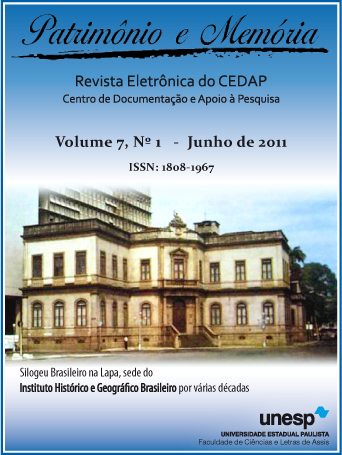Serius laugh
the comic in early modern thought
DOI:
https://doi.org/10.5016/pem.v7i1.3744Keywords:
Culture, Party, LaughterAbstract
This paper examines the evolution of the comic as the modification of the painful transition from medieval to modern thought. The highest expression of the comic, in the medieval period, lies in the popular parties, universal space of destruction and regeneration of its own dynamism of social reality. But in the medieval period, the universal character of the comic and laughter prevailed, the same does not happen within modernity, when the laughter becomes serious and focused on discrete objects, undergoing transformations in the way of their expression, namely in everyday and on days of festivity. These changes raise some questions: what were the reasons for a change and the process engendered in the way of thinking and experiencing everyday life? What is the space given to the comic, laughter seen as serious? The unspeakable's, own perception of changes and crises, which found its expression in voices?
References
BAKHTIN, Mikhail M. A cultura popular na Idade Média e no Renascimento: o contexto de François Rabelais. Tradução de Yara Frateschi. São Paulo: Hucitec/Brasília: Editora da UnB, 1996.
BURKE, Peter. Cultura Popular na Idade Moderna - Europa, 1500-1800. Tradução de Denise Bottmann. São Paulo: Companhia das Letras, 1989.
BRAIT, Beth. Bakhtin e a natureza constitutivamente dialógica da linguagem. In: BRAIT, Beth (Org.). Bakhtin: dialogismo e construção do sentido. Campinas: UNICAMP, 2005.
FARACO, Carlos A. Linguagem & diálogo: as ideias linguísticas do Círculo de Bakhtin. São Paulo: Parábola Editorial, 2009.
FERRARA, Lucrécia D’A. A estratégia dos signos. São Paulo: Perspectiva, 1986.
FERREIRA, Felipe. O Livro de Ouro do Carnaval Brasileiro. Rio de Janeiro: Ediouro, 2004.
LOTMAN, Iuri M. Sobre o problema da tipologia da cultura. In: SCHNAIDERMAN, Boris. Semiótica Russa. Tradução de A. F. Bernardini, B. Schnaiderman e L. Seki. São Paulo: Perspectiva, 1979.
LOTMAN, Iuri M. et al. Teses para uma análise semiótica da cultura (uma aplicação aos textos eslavos). In: MACHADO, Irene. Escola de Semiótica: a experiência de Tártu-Moscou para o estudo da cultura. Cotia (SP): Ateliê Editorial, 2003.
MACHADO, Irene. Escola de Semiótica: A experiência de Tartú-Moscou para o estudo da Cultura. Cotia/São Paulo: Ateliê Editorial/FAPESP, 2003.
______. O Romance e a Voz. A prosaica dialógica de Mikhail Bakhtin. Rio de Janeiro/São Paulo: Imago/FAPESP, 1995.
MARTINS, José S. A carnavalização do quotidiano: uma perspectiva psicossocial. Revista da Faculdade de Ciências Humanas e Sociais. Porto: Edições Universidade Fernando Pessoa (6), p. 128-134, 2009. Disponível em: <http://bdigital.ufp.pt/dspace/bitstream/10284/1321/1/128-134_FCHS06-2.pdf>. Acessado em 02/05/2011 às 10hs40.
MINOIS, Georges. História do Riso e do Escárnio. Tradução de Maria Elena O. Ortiz Assunção. São Paulo: UNESP, 2003.
PINHEIRO, Marlene, S. Sob o signo do carnaval. São Paulo: ANNABLUME, 1995.
SAOUTER, Catherine. A imagem: signo, objecto, performance. Revista Prisma.com. Porto, n. 2, p. 77-92, 2006. Disponível em: <http://portal.doc.ua.pt/journals/index.php/prismacom/article/view/613>.
WALL, Anthony. Ligações insuspeitas entre carnaval e dialogismo. BAKHTINIANA, São Paulo, v. 1, n. 3, p. 9-28, 2010. Disponível em: <http://revistas.pucsp.br/index.php/bakhtiniana/article/view/3367/2237> Acessado em 01/05/2011 às 17hs05.
Downloads
Published
How to Cite
Issue
Section
License
Copyright (c) 2011 Patrimônio e Memória

This work is licensed under a Creative Commons Attribution 4.0 International License.
All the content of the journal, except where noted, is licensed under a Creative Commons BY attribution license.


